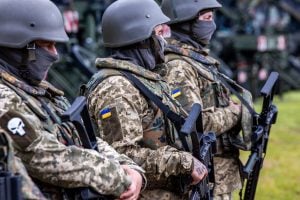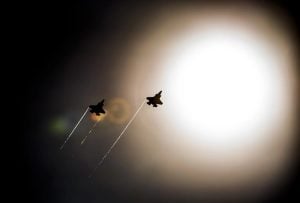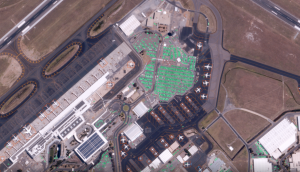Bashar al-Assad, the leader of Syria, reportedly fled Damascus early Sunday, following a rapid assault by the insurgent group Hayat Tahrir al-Sham over the last two weeks, upending the regional order in West Asia in a major blow for Iran and Russia. After almost 15 years of civil war, the final push to overthrow Syria’s President Bashar al-Assad took less than 15 days.
Syria Being Purified | What Has Happened In Syria
Why In News
- Bashar al-Assad, the leader of Syria, reportedly fled Damascus early Sunday, following a rapid assault by the insurgent group Hayat Tahrir al-Sham over the last two weeks, upending the regional order in West Asia in a major blow for Iran and Russia. After almost 15 years of civil war, the final push to overthrow Syria’s President Bashar al-Assad took less than 15 days.
- Syrian government collapsed as a result of a swift rebel offensive that seized control of Damascus, sending shockwaves through the capital. Crowds flooded the streets, celebrating the end of the Assad family’s 50-year iron rule. Syrian state television broadcast a statement from a group of men announcing that President Bashar al-Assad had been overthrown and that all political detainees had been released from prisons.
Why Is Syria In The Midst Of A Civil War?
- Since 1971, Syria was in the control of Hafez al-Assad, the all-powerful President seen by many as a dictator. After Hafez died in 2000, his son, Bashar, took over.
- In 2011, when the Arab Spring saw dictators being toppled across West Asia, protests began against Assad too. Assad belongs to the Alawite community, a sect of Shia Islam.
- Many in Syria believed that while Sunnis were the majority, power and resources were concentrated in the hands of the Alawaites. After coming to power, Assad had opened up the economy, but the gains had largely been limited to the elites. Thus, when protests began — initially peacefully — price rise and unemployment were among the major issues.
- Assad’s regime cracked down on the protesters, and the agitation soon spiralled into armed civil war. Among the fighters were many factions — with different external backers — and many aims, but forcing Assad to step down was a largely common goal.
- The rebels had taken control of areas to the northeast and northwest of the country. However, Assad was in control of a large section of Syria. This was made possible thanks to a major offensive in 2015, when Russia provided air support and Assad’s forces, with the help of Iran, beat back the rebels. Since 2020, the civil war had remained a frozen conflict, till the anti-government forces mounted a quick and surprisingly effective campaign from November 27.
Who Was Fighting Whom, And Why?
- The leader of the group that just captured Damascus is Hayat Tahrir al-Sham (HTS), led by Abu Mohammad al-Jolani. The HTS was founded in 2011 as Jabhat al-Nusra, the al-Qaeda’s branch in Syria.
- In 2016, it broke away to form the Jabhat Fateh al-Shaam (JFS), standing for the liberation of al-Shaam, or the Levant (the sub-region of the Middle East lying near the Mediterranean Sea, including Jordan, Syria, Lebanon, Israel and Palestine). The HTS wanted to overthrow Assad and establish a Sunni-Islamic rule.
- The other significant player are the Syrian Democratic Forces (SDF), a collection of Kurdish militias that want more autonomy and rights for the Kurds. They are not a major enemy of Assad.
- Then is the Turkey-backed Syrian National Army, opposing both Assad and the Kurds.
- Among foreign players, Iran and Russia support Assad, and Lebanon’s Hezbollah have provided him with crucial fighting support. The US and Turkey have backed the anti-Assad forces, though Turkey’s beef is mainly with the Kurds, including those within its own borders.
- Syria under Assad was a staunch supporter of Palestine, and thus Israel too has conducted strikes over it.
Who Is Abu Mohammed al-Golani
- Abu Mohammed al-Golani, the 42-year-old leader of the insurgent group that played a pivotal role in ousting Syrian President Bashar al-Assad and ending his regime, has spent years trying to distance himself from his extremist past and present a more moderate face to the world.
- Known for his central role in Syria’s ongoing civil war, al-Golani has transitioned from being a jihadist figure tied to al-Qaida to a leader advocating for pluralism and state-building.
- Al-Golani’s group, Hayat Tahrir al-Sham (HTS), has been a key player in the rebellion that led to the fall of Damascus on Sunday, forcing Assad into hiding. The collapse of Assad’s regime, after more than five decades of family rule, has raised questions about Syria’s future, with many ethnic and religious communities fearing the rise of Sunni Islamist extremists.
- Al-Golani’s transformation from an al-Qaida-linked fighter in Iraq to the leader of HTS has been marked by strategic rebranding.
- In 2016, he severed ties with al-Qaida, renaming his group first to Jabhat Fateh al-Sham and later to Hayat Tahrir al-Sham.
- This shift allowed him to consolidate power and forge alliances with a diverse range of ethnic and religious groups that had previously been alienated by extremist factions.
What Happened Over The Last Two Weeks
- With Iran, Hezbollah, and Russia all distracted with their own wars in Gaza and Lebanon, and Ukraine, respectively, Assad was missing critical support. As the rebels ran over the country, they met little effective resistance from the official Syrian Army.
- However, it is too early to say if Assad’s fall is the end of the Syrian civil war, or just another chapter.
- While Assad was undoubtedly unpopular, many believed him to be a bulwark against Sunni Islamic fundamentalism, and a champion of minority rights.
- Assad was never meant to be Syria’s leader. He was an ophthalmologist practising in London when his elder brother and father’s heir apparent, Basil, died in a car crash in 1994.
- After he came to power in 2000, there were early, nascent indications that his rule would not be as authoritarian as his father’s. His marriage to London-born investment banker Asma Akhras further boosted his liberal image.
- But his response to the 2011 protests, and the increasing brutality of repression since, ended all hopes of a ‘Damascus Spring’. However, the group that has toppled him has a violent al-Qaeda past. Though the HTS has struck a more liberal, conciliatory note towards minorities recently, many fear their win might turn Syria into an ‘Afghanistan on the Mediterranean’.
- Russia has ruled out active involvement in the latest Syrian crisis, and Joe Biden’s administration too has shown no signs of intervening. The incoming US President Donald Trump, meanwhile, tweeted on Saturday, “THIS IS NOT OUR FIGHT. LET IT PLAY OUT. DO NOT GET INVOLVED!”
India’s Ties With Bashar al-Assad
- India has had friendly ties with Syria under Assad. In fact, The 6th Round of India-Syria Foreign Office Consultations took place in New Delhi on November 29.
- The Ministry of External Affairs said in a press release then, “India and Syria enjoy warm and friendly relations based on historic and civilisational ties. India has been a keen developmental partner for Syria and is also actively involved in capacity building of the Syrian youth.
- Both the countries also cooperate on various multilateral forums. The discussions held today will contribute in further strengthening of India-Syria bilateral partnership.”































